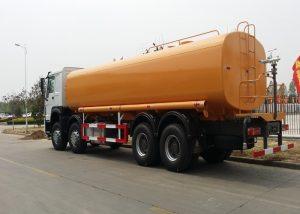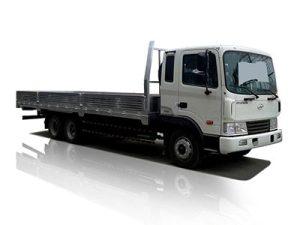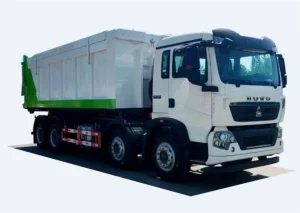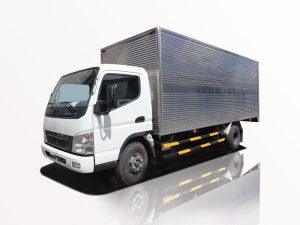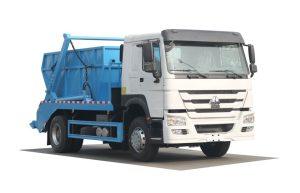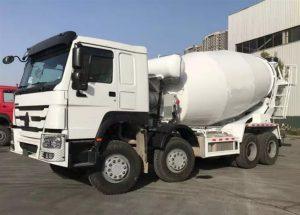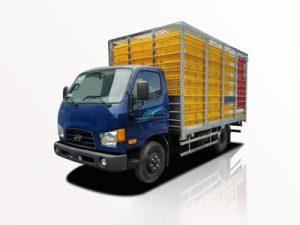Monday to Saturday - 8:00 -17:30
Exploring the Japanese Flatbed Truck: Your Comprehensive Guide
The Japanese flatbed truck is a unique and versatile vehicle that has earned a solid reputation for its durability, efficiency, and wide range of uses. This article will delve into the features, benefits, and various applications of these trucks, along with practical examples, tips for purchasing, and frequently asked questions to guide potential buyers. Whether you’re in the market for a flatbed truck or simply interested in their capabilities, this guide is designed to provide you with a thorough understanding.
Table of Contents
- What is a Japanese Flatbed Truck?
- A Brief History of Japanese Flatbed Trucks
- Types of Japanese Flatbed Trucks
- Key Features of Japanese Flatbed Trucks
- Advantages of Japanese Flatbed Trucks
- Common Applications of Japanese Flatbed Trucks
- How to Choose the Right Japanese Flatbed Truck
- Maintenance Tips for Japanese Flatbed Trucks
- Cost and Purchase Options
- Frequently Asked Questions (FAQ)
What is a Japanese Flatbed Truck?
A Japanese flatbed truck, also known as a “ Kei truck” or “flat deck truck,” is a small to medium-sized vehicle commonly used for transporting goods. Characterized by its flatbed design, these trucks are ideal for carrying various materials, ranging from construction supplies to furniture. They are particularly popular in Japan and many other parts of Asia due to their compact size, fuel efficiency, and ability to navigate tight spaces.
A Brief History of Japanese Flatbed Trucks
The origins of Japanese flatbed trucks can be traced back to the 1960s when Japan’s automotive industry began evolving rapidly. As urbanization increased, the need for practical and space-saving transport solutions became apparent. The Kei truck segment emerged in response, designed with specific regulations to limit size and engine capacity. This innovation led to the creation of flatbed trucks that combined utility with efficiency, making them ideal for businesses and industries.
Types of Japanese Flatbed Trucks
1. Standard Flatbed Trucks
These are the most common type, featuring a simple flat cargo area perfect for general transport tasks.
2. Dropside Flatbed Trucks
These trucks have sides that drop down for easier loading and unloading of goods. This design is especially useful for transporting larger items.
3. Tilter Flatbed Trucks
Tilter flatbed trucks are equipped with hydraulic systems to tilt the bed, allowing for easier unloading of heavier goods.
4. Crew Cab Flatbed Trucks
This variation includes additional seating space for drivers and passengers, offering more utility for team transport alongside cargo.
Key Features of Japanese Flatbed Trucks
Compact Size
Designed to fit into tight spaces, these trucks are perfect for urban environments.
Fuel Efficiency
With small engines, Japanese flatbed trucks typically offer excellent fuel economy, reducing operating costs.
Durability
Manufactured with high-quality materials, these vehicles are built to last, capable of handling various loads under demanding conditions.
Versatility
They can be used for numerous purposes, from personal moving to commercial goods transportation.
Advantages of Japanese Flatbed Trucks
1. Cost-Effectiveness
The affordability of Japanese flatbed trucks, both in terms of purchase price and maintenance, make them an attractive option for businesses.
2. Easy Maneuverability
Smaller size allows drivers to navigate through congested areas with ease, making them ideal for city deliveries.
3. Customization Options
Many Japanese flatbed trucks offer customizable features, allowing owners to tailor them to specific business needs.
Common Applications of Japanese Flatbed Trucks
| Application | Description | Example |
|---|---|---|
| Construction | Transport heavy machinery and building materials to construction sites. | Delivering bricks and masonry tools. |
| Landscaping | Carry soil, plants, and heavy landscaping equipment. | Moving soil and large planters. |
| Delivery Services | Used by businesses for local deliveries of goods. | Delivering furniture or appliances. |
| Waste Management | Collect and transport waste materials. | Municipal waste collection. |
| Moving | Facilitates personal moves and transportation of household items. | Moving houses or apartments. |
How to Choose the Right Japanese Flatbed Truck
Assess Your Needs
Consider the types of materials you’ll be transporting, frequency of use, and nature of the terrain where the truck will operate. This will help you decide on the size, weight capacity, and features required.
Research Models
Explore various models and manufacturers to find trucks that best fit your needs. Brands like Suzuki, Daihatsu, and Nissan offer a range of flatbed trucks with different features.
Consider New vs. Used
Decide whether to purchase a new or used vehicle. New trucks often come with warranties and the latest features, while used options may provide significant savings.
Evaluate Maintenance and Service
Research the availability of parts and service for the models you are considering. Reliable service and support can save you time and money in the long run.
Maintenance Tips for Japanese Flatbed Trucks
Regular Inspections
Conduct regular inspections to check for signs of wear and tear, including the tires, brakes, and cargo area. Early detection can prevent major issues.
Fluid Levels
Keep an eye on oil, coolant, and transmission fluid levels. Regular fluid changes are essential for optimal performance.
Tire Care
Regularly check tire pressure and tread depth. Properly maintained tires enhance fuel efficiency and improve safety.
Brake Maintenance
Ensure brakes are serviced periodically to maintain stopping power and safety on the roads.
Cost and Purchase Options
The cost of Japanese flatbed trucks can vary widely based on model, age, condition, and features. Generally, new trucks may range from $15,000 to $30,000, while used models can often be found for less than $10,000. Here are some common purchasing options:
Dealerships
Visit local dealerships that specialize in Japanese vehicles. They may have new or certified pre-owned trucks available.
Online Marketplaces
Websites such as eBay, Craigslist, and dedicated vehicle selling platforms can offer a variety of options for both new and used trucks.
Auction Sites
Consider government or commercial auctions which sometimes feature used trucks in good condition at competitive prices.
Importing
For those looking for specific models not available locally, importing from Japan may be an option. However, it’s important to understand the regulations and costs involved.
Frequently Asked Questions (FAQ)
1. What is a Kei truck?
A Kei truck is a small, lightweight truck designed for short-distance transport under specific regulations in Japan. They are often affordable and efficient.
2. Are Japanese flatbed trucks fuel-efficient?
Yes, they are known for their excellent fuel efficiency due to their smaller engines and lightweight construction.
3. Can I import a Japanese flatbed truck to the U.S.?
Yes, you can import a Japanese flatbed truck, but it’s essential to follow the U.S. regulations and consider any modifications that may be necessary to meet safety and environmental standards.
4. What is the typical payload capacity of a Japanese flatbed truck?
Payload capacity varies by model but typically ranges from 1,000 to 2,000 pounds. Always check the manufacturer’s specifications for accurate details.
5. How do I maintain a Japanese flatbed truck?
Regular maintenance involves checking fluid levels, inspecting tires and brakes, and conducting routine inspections to ensure all systems are functioning correctly.
6. Are parts readily available for Japanese flatbed trucks?
Yes, many spare parts are available, especially for popular models. However, availability may depend on local market conditions and the specific model you own.


